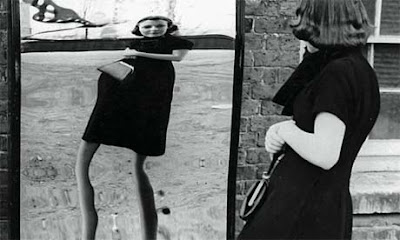The S-Perfume "house" began in 2000, the first all-original perfumery to come out of Brooklyn, New York, though not the first one to be founded by a completely unrelated to perfumery individual. Nobi Shioya is a sculptor with an interest in scent who used various fragrances to scent his “Olfactory Art” installations. Nobi ~under the nom de plume Sacré Nobi~ brought on board perfume veterans such as Carlos Benaim and Sophia Grojsman. As Chandler Burr said: “Shioya shares with the scent-architect Frédéric Malle a Woody Allen-ish knack for convincing stars to work for him.” They began to create a series of scents as an art project with very fancy ad copy and very limited distribution (Which sorta begs the question how the hell did certain non-professional people get on his wares so very, very early on, but I'll leave this to the more sleuthing among you). Word of mouth made the brand something of a mini-cult, not always deservedly (From the newly relaunched and pared down to three range S-ex is by far the most interesting and 100%Love the most wearable).
S-Perfume Classic was originally composed by Alberto Morillas under the project name Jet-Set 1.0 (all the S-Perfumes had conceptual names back then, taking inspiration from the seven deadly sins originally and later taking abstract names such as 100% Love). Christophe Laudamiel re-orchestrated it somewhat to its current formula, sold now as S-Perfume "classic". The label also changed, this time bearing a sort of sketching protozoon (or spermatozoon, if you prefer).
The ambience of the S-Perfume Classic is that of contemporary non-scents: Like Molecule 01 from Escentric Molecules, this is something that doesn't quite register on the cortex but moves like an abstract clean-musky aura around, coming in and out of focus. The ozonic, oxygen touch coupled with the "clean" factor of lavender, aromatic somewhat masculine-smelling herbs and sanitized musk -consisting of the familiar to all via functional products Galaxolide musk type- soon eschews all images of sensuality (The official notes mention creamy, cozy ingredients such as sandalwood and vanilla substituted by Laudamiel for the benzoin which Morillas had used, which nevertheless should not at any rate lead you to believe that we're dealing with a predominantly sensual affair of a skin-scent; the most you get is a hint, a tiny hint of suntan oil at a distance).
On the contrary, S-Perfume Classic has the salty zingy skin-like smelling effect of L'Eau Ambrée by Prada, airated by the coolness encountered in Serge Lutens's L'Eau Froide (but arrived to through totally different means) and is not a classic warm "beachy" fragrance.
Morillas had utilized the "clean" and "energetic" idea to impressive effect already in CK One (collaborating with Harry Fremont) and Mugler's Cologne, balanced with subtler salty-skin and herbs accents in the discontinued CK Truth (with Jacques Cavallier and Thierry Wasser)and adding a touch of cool spice in Bulgari's BLV. Laudamiel emphasized the somewhat rubbery facets recalling neoprene with a subtle woody-powdery finish that is sometimes perceptible and sometimes is not. But it's the shiny, almost hurting the eyes oxygen blast, as squeeky clean as the eyesore one gets upon opening their windows to a blinding white winter day decked in a yard of snow, or the whiteness of the water inside a surf wave, which stay in one's memory.
Notes for S-Perfume Classic: ozonic note, muguet mist, thyme, lavender, musks, sandalwood, vanilla bourbon
.jpg)












.jpg)



.jpg)
.jpg)
.jpg)
.jpg)
.jpg)
.jpg)
.jpg)

.jpg)


.jpg)
.jpg)
.jpg)







